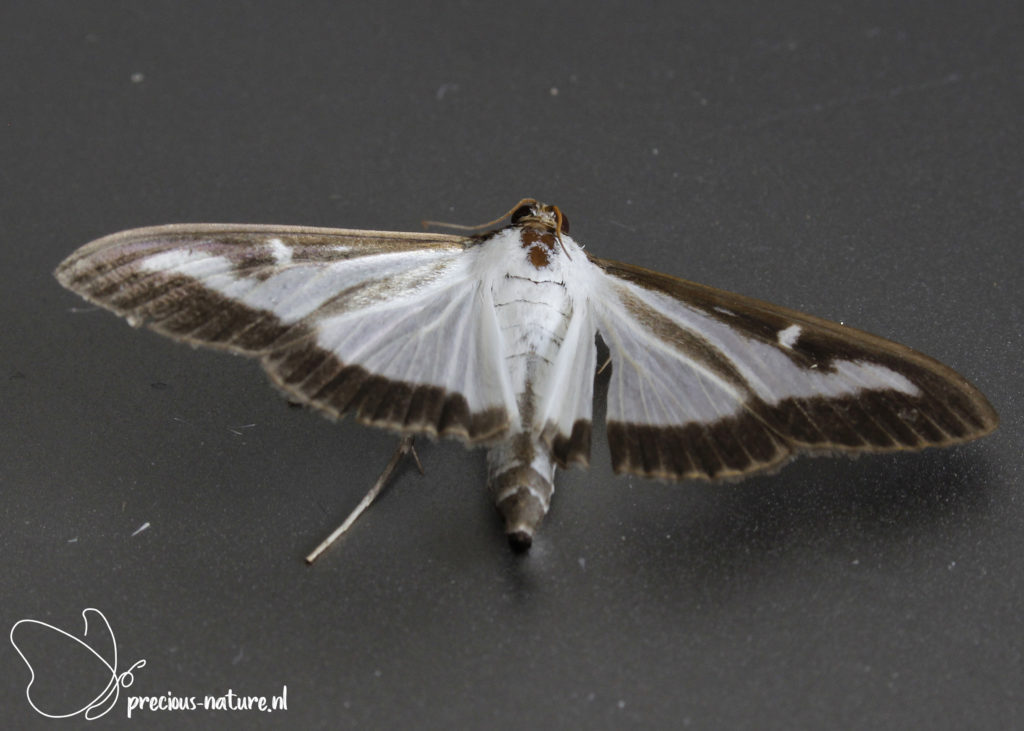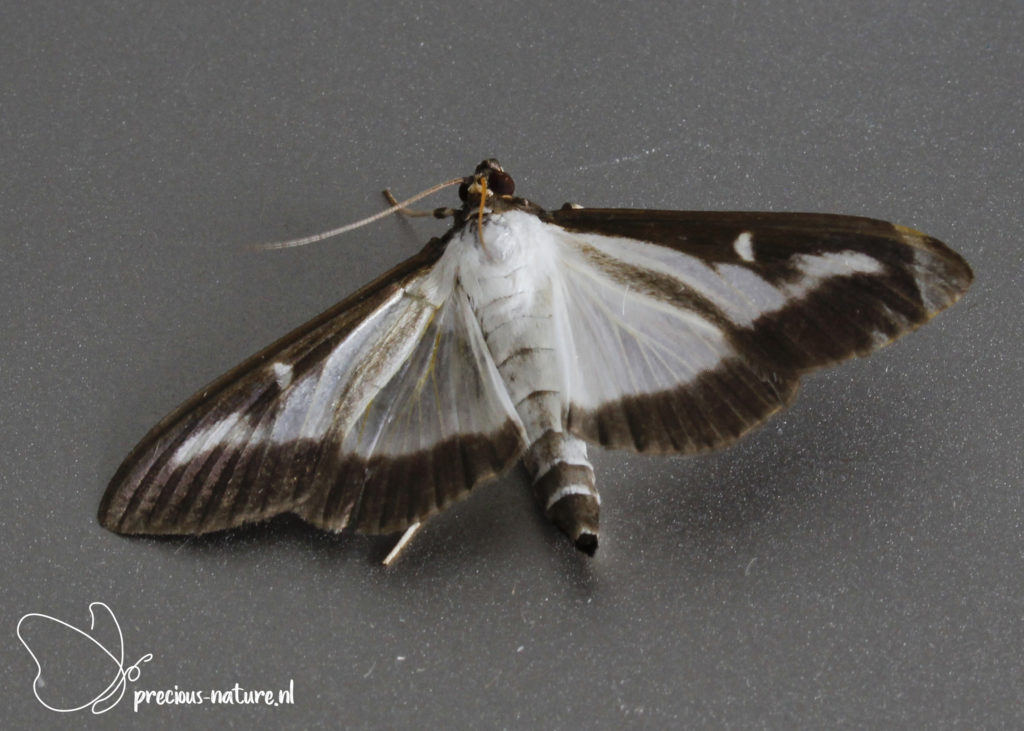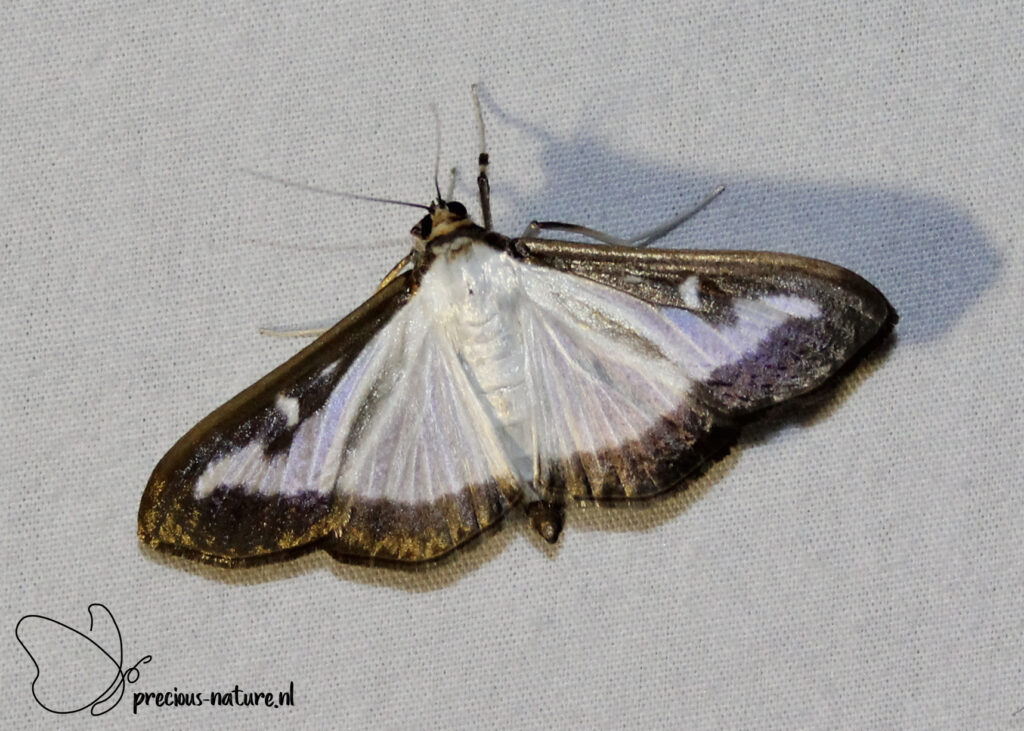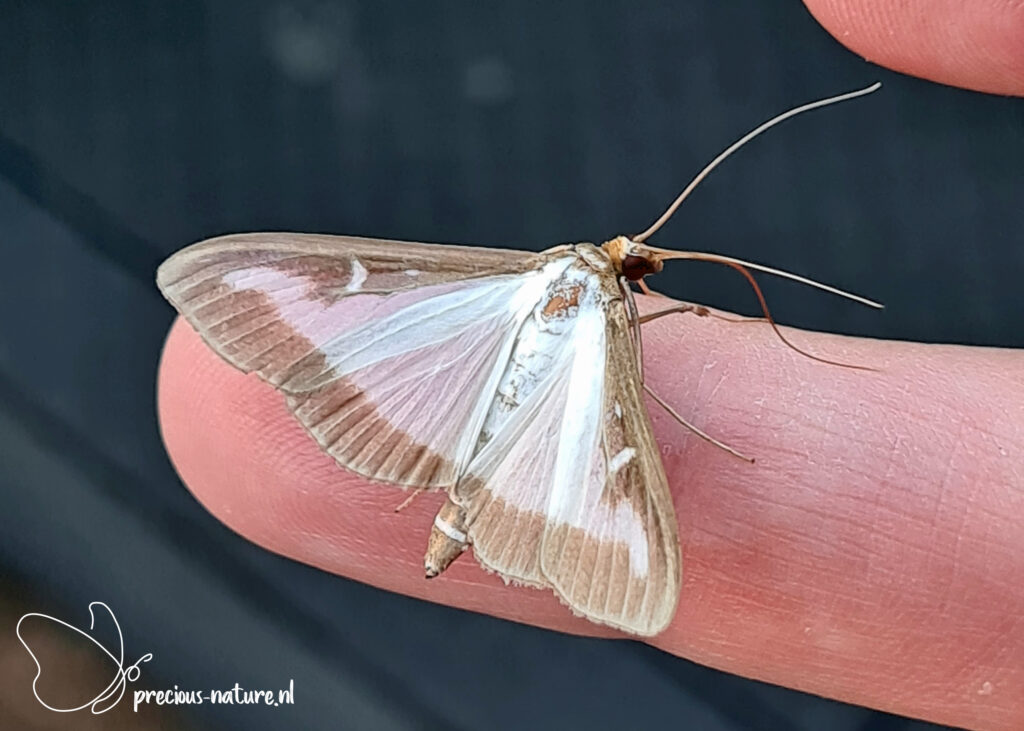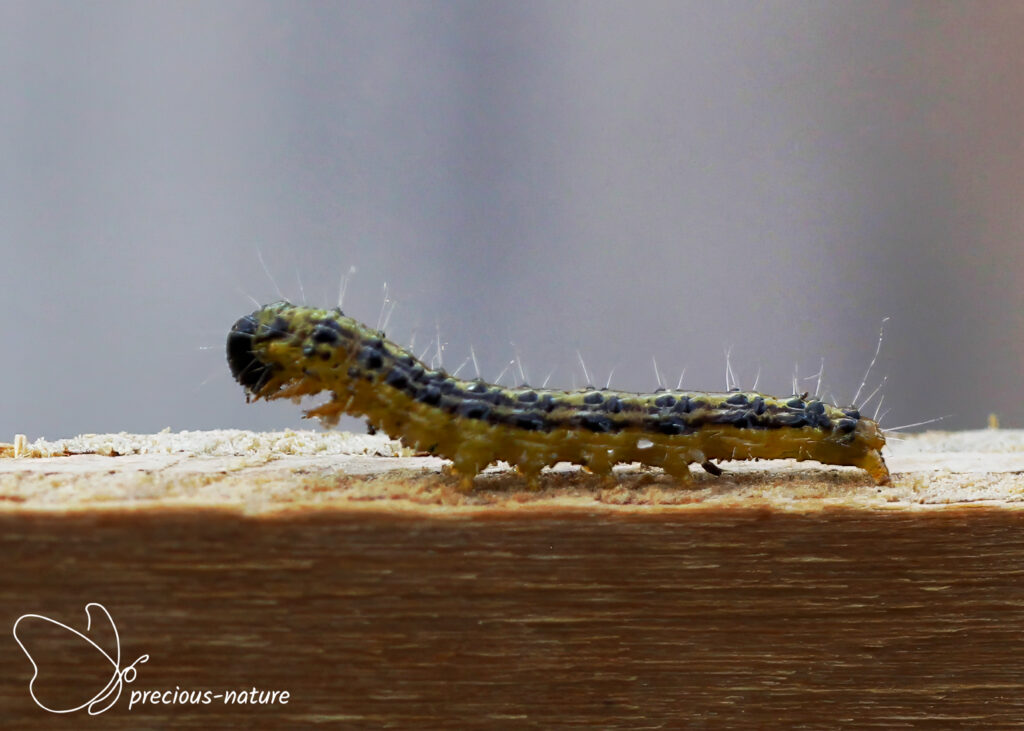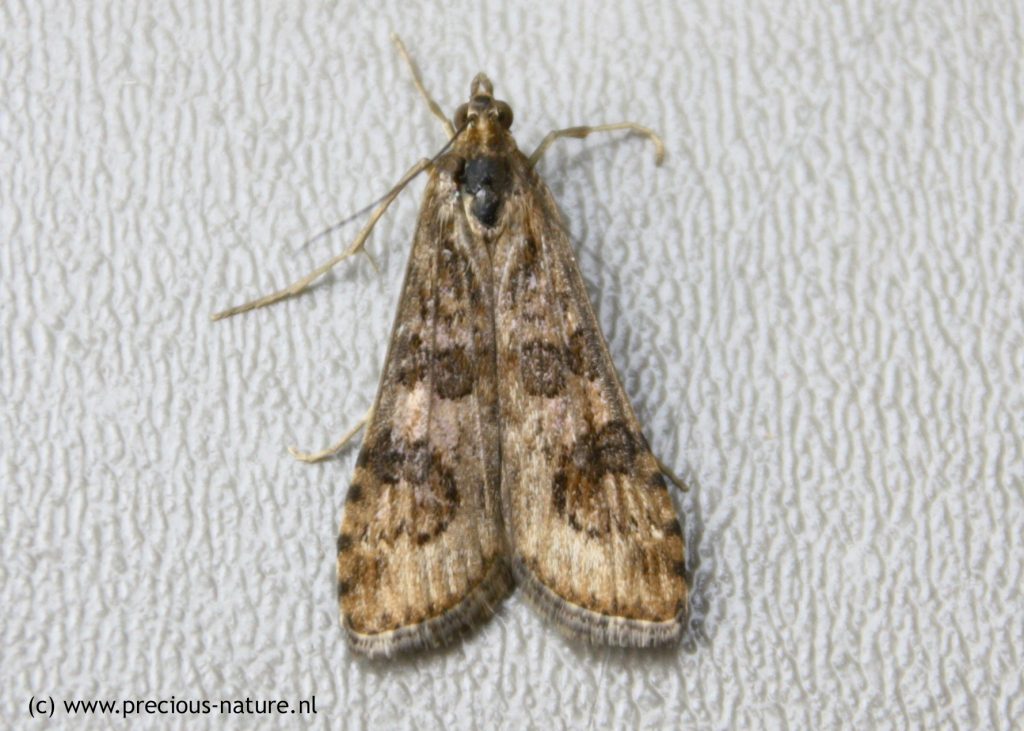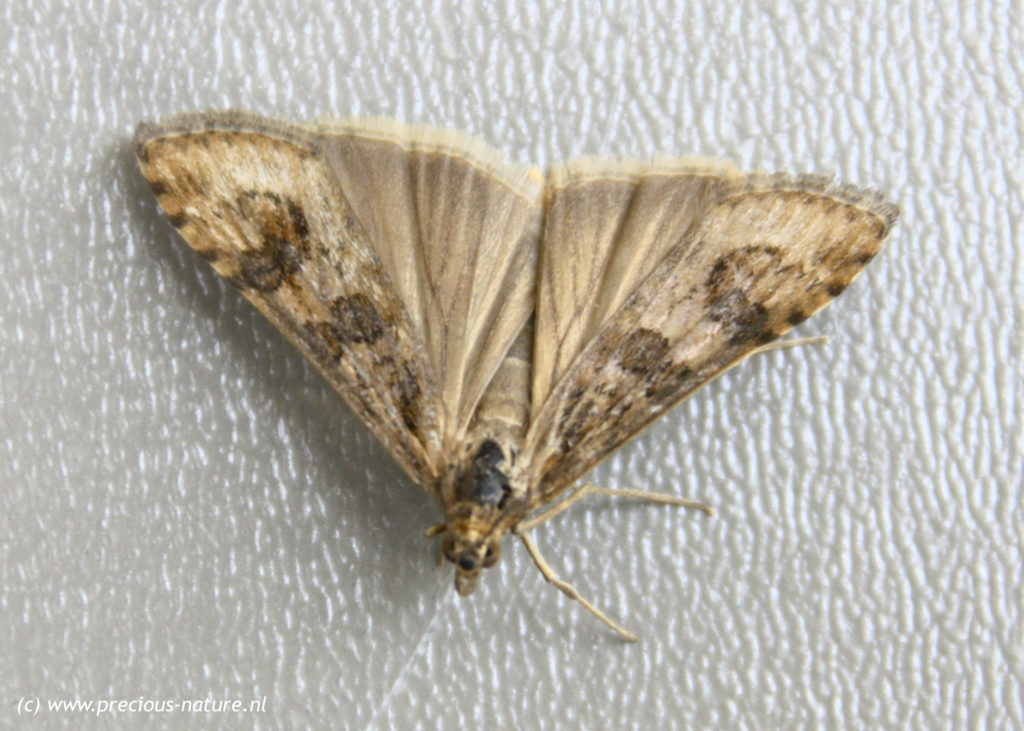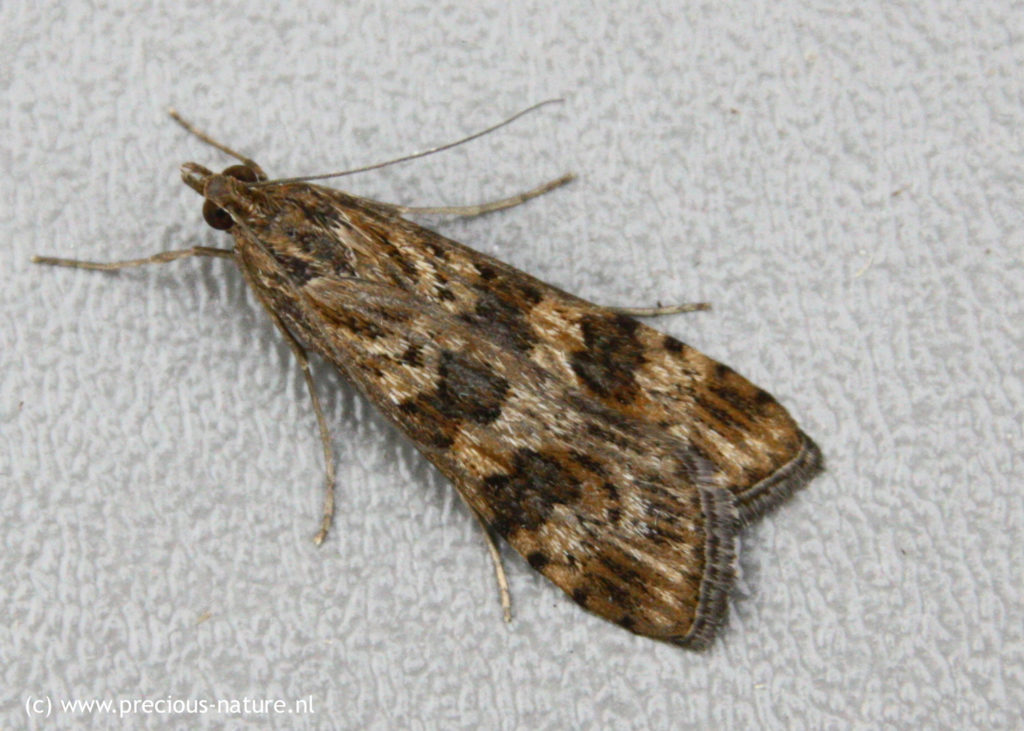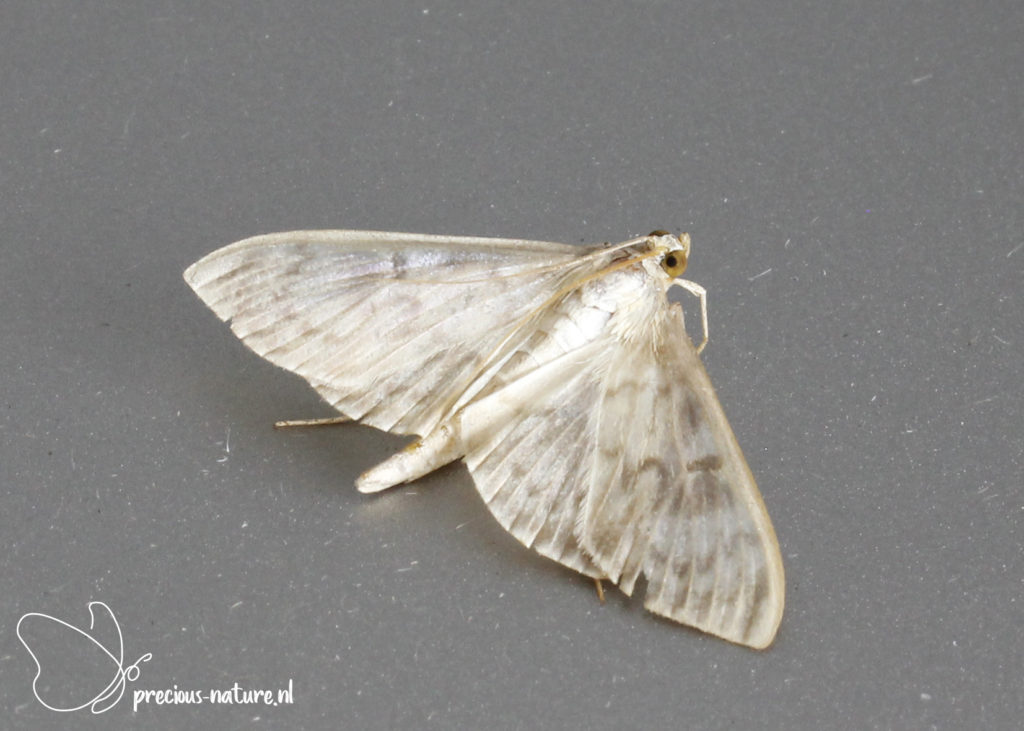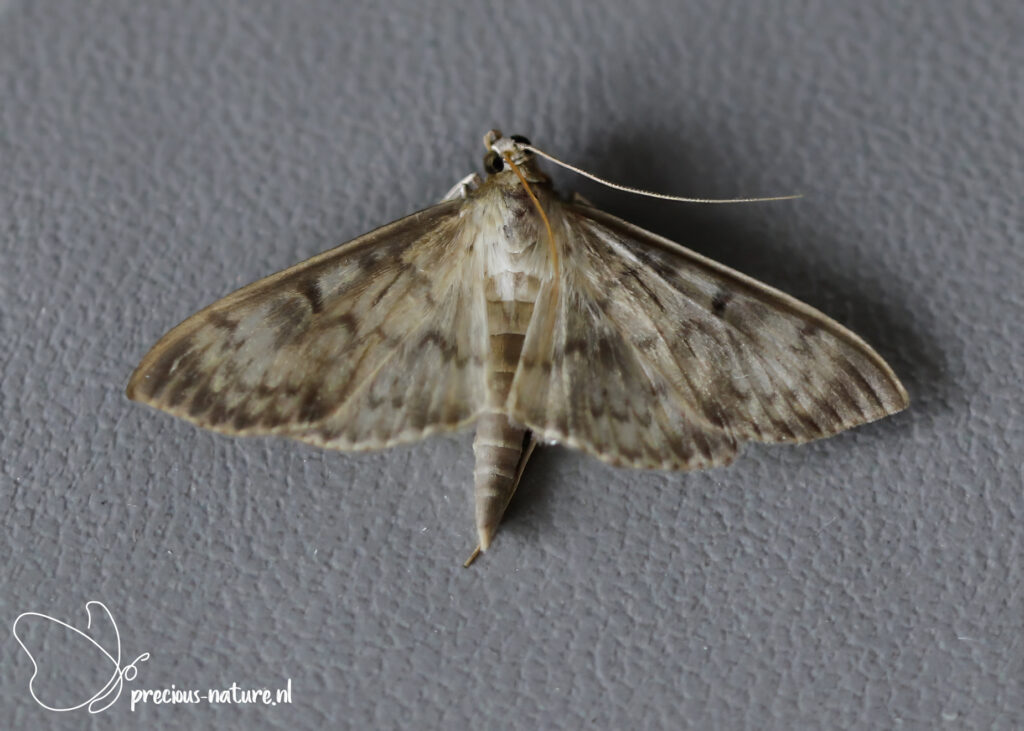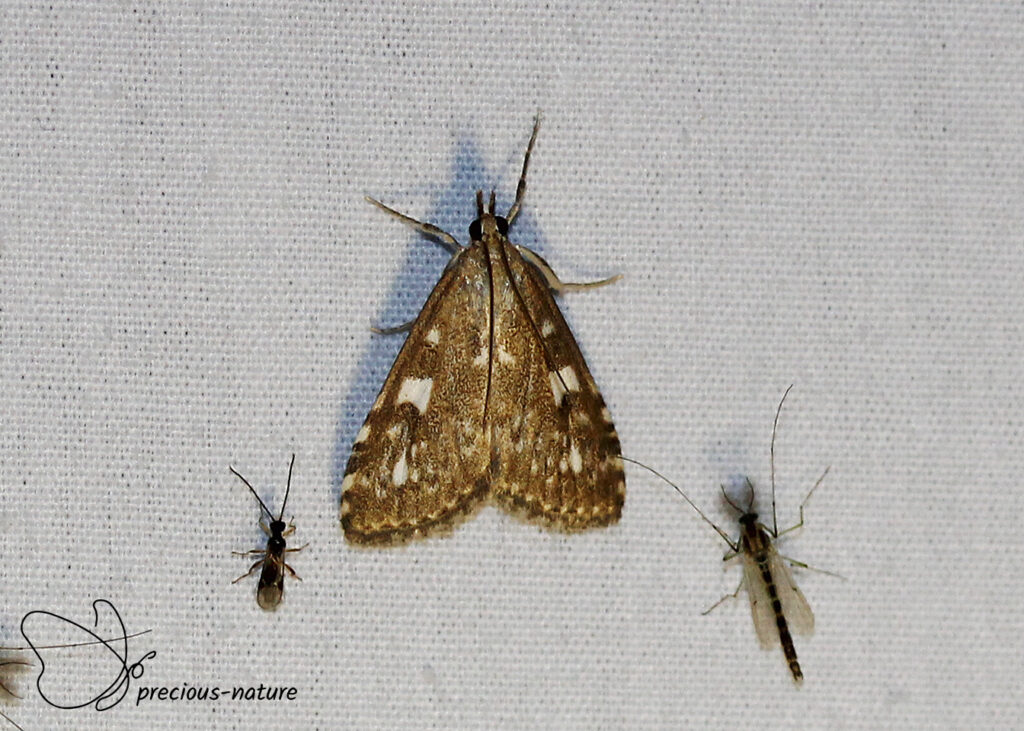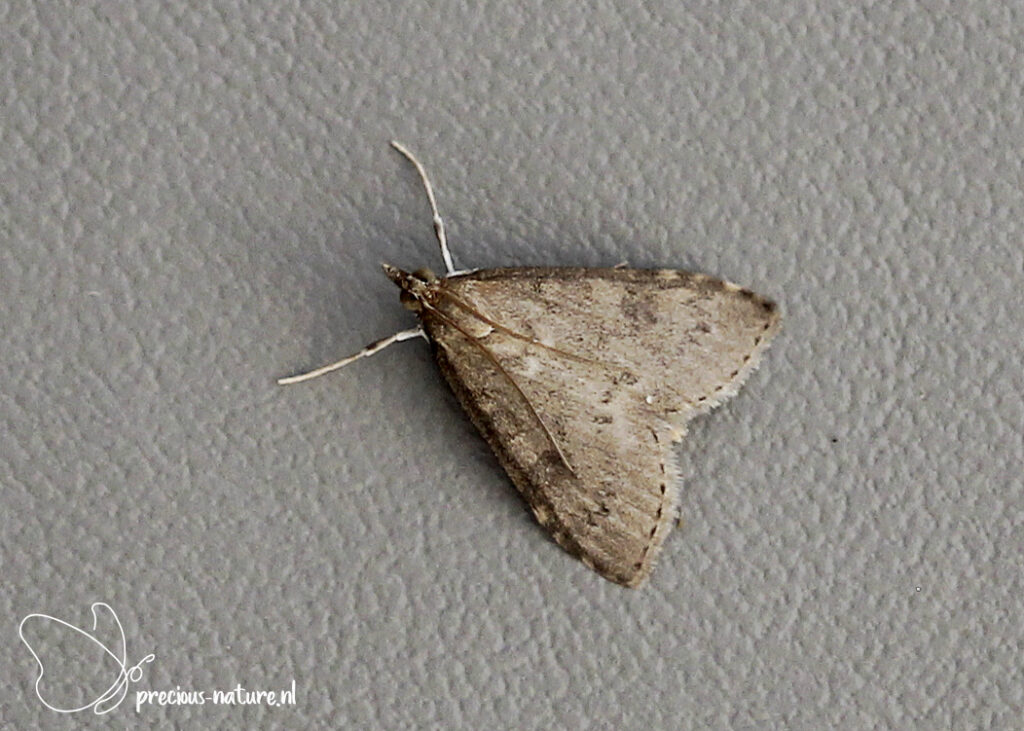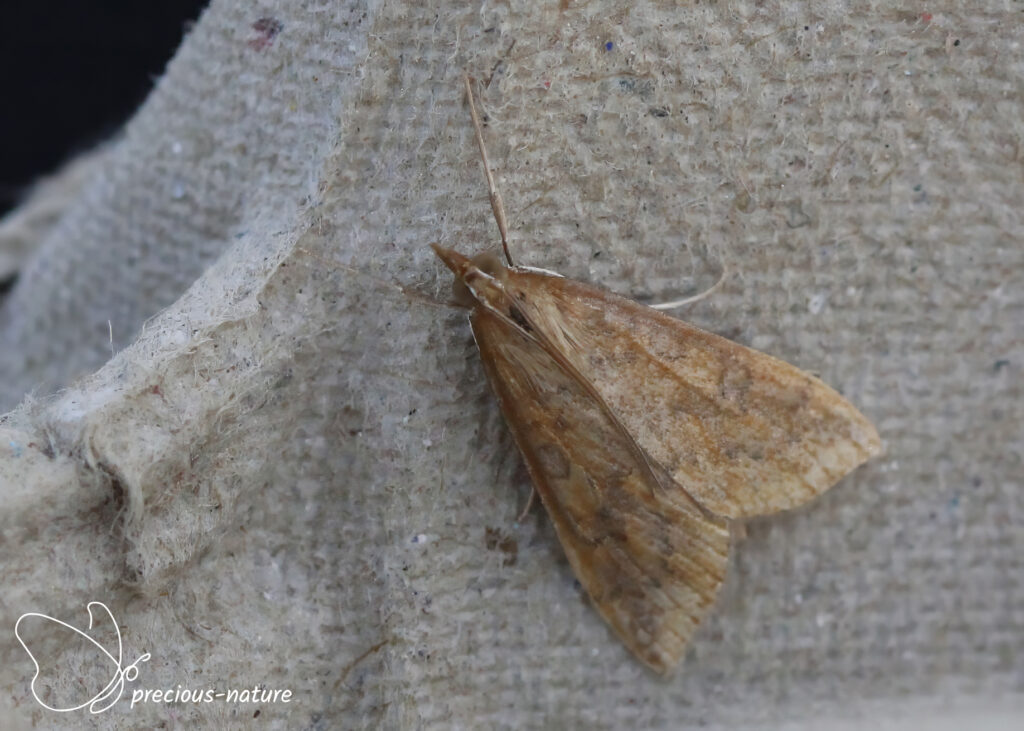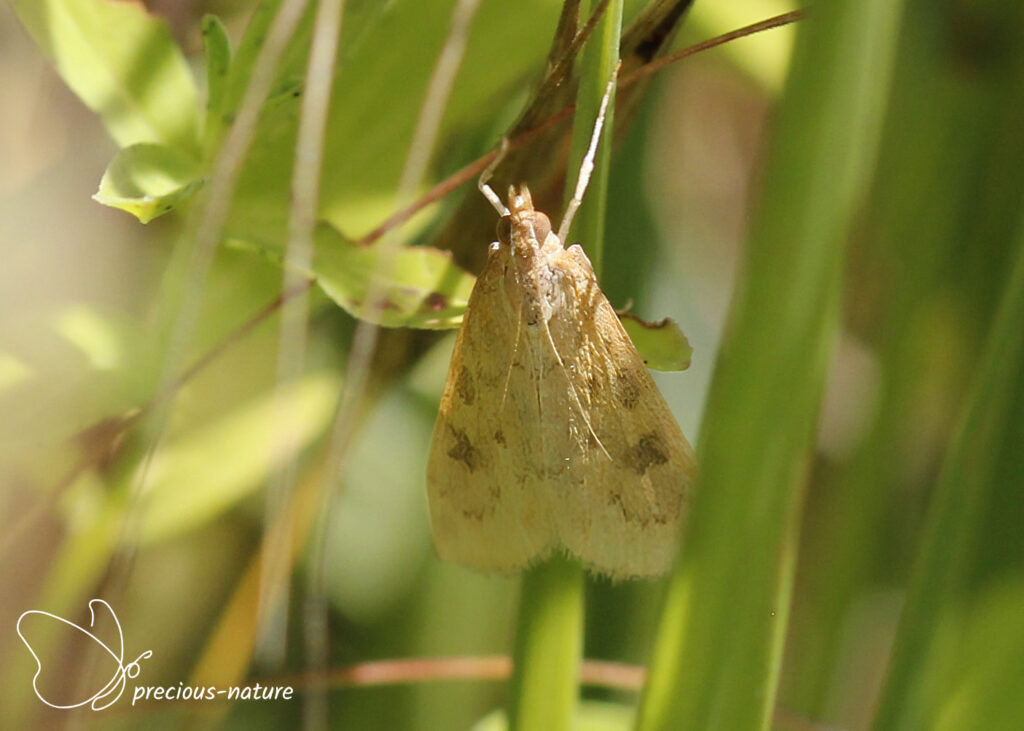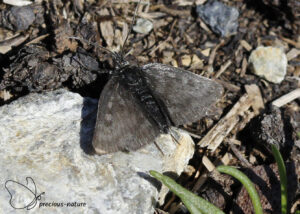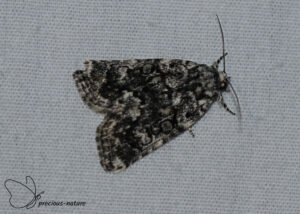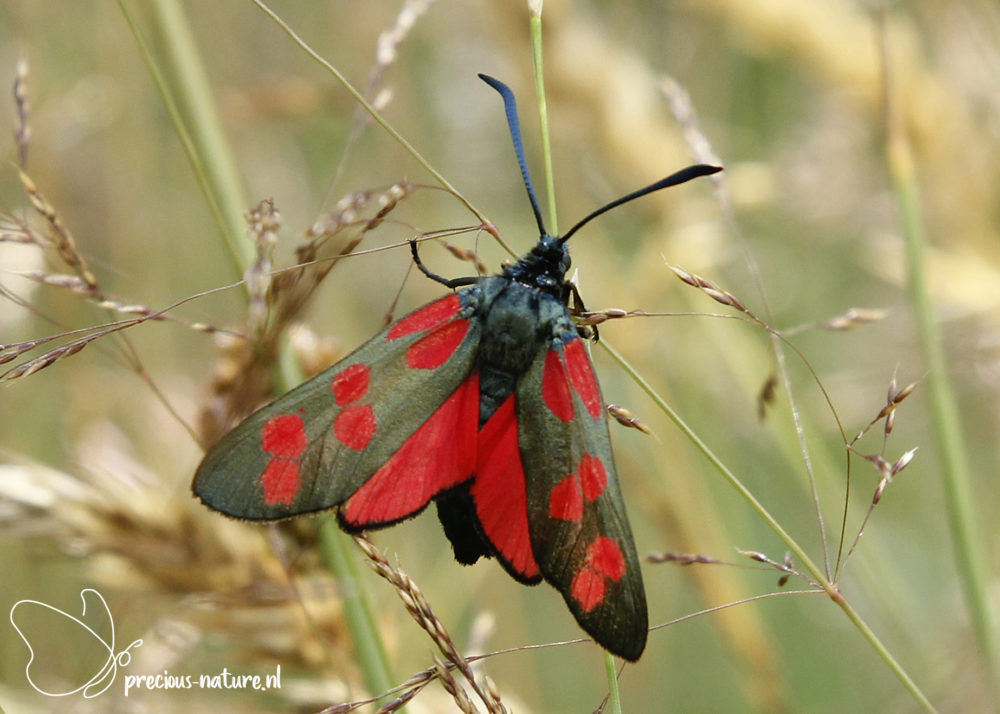Spilomelinae is a subfamily of the Grass Moths (Crambidae) that previously fell under the Pyraustinae. Worldwide, slightly more than 4,100 species have been registered. When resting, a triangular shape is accomplished, with the abdomen covered with the wings and the forewing overlying the hindwing. The eyes, antennae, and mouthparts are very well developed.
Genus: Cydalima
Box-tree Moth – 2020 (NL)
(NCBI-index: 1.309588)
During the year, there is a lot of talk about the larvae of the Box-tree Moth (Cydalima perspectalis). Many people sometimes suffer from bare Buxus bushes, which are almost impossible to stop. Finally, I could lure the moth responsible during a moth session. The forewing is bright, translucent white. A distinct brown band can be seen along the costa, continuing from the apex in a wider brown band along the termen. This brown band is also clearly visible on the hindwing. Along the costa, a small white spot can be seen on the forewing in the slightly widened brown band. The flying period spans from May to October, occurring in two generations, and the wingspan ranges from 35 to 40 mm. Host plant: Buxus. Dutch name: Buxusmot. Frisian name: –
Flying period:

Genus: Nomophila
Rush Veneer – 2018 (NL)
(NCBI-index: 1.209556)
An easily recognisable grass moth is the Rush Veneer (Nomophila noctuella). When resting, this grass moth looks long and narrow. The forewing is greyish brown with dark markings, or brown or reddish-brown with slightly darker and more obscure markings. In some species, you will see an 8-shaped mark halfway down the wing and a kidney-shaped spot at 2/3. This makes the grass moth look like a leopard. Some dark spots can be seen on the leading edge of the forewing near the apex. The flying period is from May to September, and the wingspan is 26-32mm. The larvae feed in a silk tube. Host plant: White Clover, Selfheal. Dutch name: Luipaardlichtmot. Frisian name: –
Flying period:

Genus: Pleuroptya
Mother of Pearl – 2019 (NL)
(NCBI-index: 753217)
Often, grass moths are not very big. An exception is the Mother of Pearl (Pleuroptya ruralis). This moth that is attracted easily to light is about 26-40 mm and is sometimes confused with a geometer moth. The forewing is pale yellow-brown with a grey speckle and a pearly sheen. The grey speckle makes it look like the wings are transparent when he sits on a grey wooden fence, like mine. On 1/3 and 2/3 of the forewing, there are dark transverse lines, twisting around a sometimes unclear marking at 2/3. The flying period in one generation is from June to October. The larvae feed in a rolled-up leaf of the host plant. Host plant: Common Nettle. Dutch name: Parelmoermot. Frisian name: –
Flying period:

Genus: Udea
Olive Pearl – 2018 (NL)
(NCBI-index: 1.002971)
An easily recognisable grass moth is the Olive Pearl (Udea olivalis). The forewing is greyish brown with a distinct white square centrally located spot and some minor white spots on the rest of the wing (especially towards the apex). Alternating black and white spots can be seen on the wing margin. The flying period in one generation is from May to August, and the wingspan is 24-28 mm. The larvae can be found in a spun or turned leaf. Host plant: Nettle, Dog’s Mercury, Yellow Archangel, Red Campion, Common Comfrey. Dutch name: Witvlekkruidenmot. Frisian name: –
Flying period:

Genus: Udea
Dusky Pearl – 2018 (NL)
(NCBI-index: 1.002972)
The first spot of the Dusky Pearl (Udea prunalis) was a bit of a puzzle. Because the specimen was worn reasonably well, extra attention had to be paid to specific characteristics to distinguish it from the Olive Pearl (Udea olivalis). The forewing is grey-brown and darker on the costa. Close to the apex on the edge, dark and light spots alternate. On 2/3 of the wing, you can see an unclear transverse line slightly darker than the ground colour of the wing. Where white spots can be seen in the fringed line of the Olive Pearl, those of the Dusky Pearl are missing. Furthermore, the large white square spot is missing. The flying period spans from May to August in one generation, and the wingspan ranges from 20 to 24 mm. The larvae can be found in the spun leaves of the host plant. Host plant: dead nettle, Black Horehound, Common Knapweed, Dog’s Mercury, Common Nettle, Elder, and Blackthorn. Dutch name: Grijze kruidenmot. Frisian name: –
Flying period:

Genus: Udea
Rusty-dot Pearl – 2023 (NL)
(NCBI-index: 1.002954)
On the orange-brown forewing of the Rusty-dot Pearl (Udea ferrugalis), two dark spots can be seen along the leading edge. There is an elongated spot at 1/3 and a more round spot halfway down. At 2/3, a curved transverse line of triangular black spots runs from the leading edge to halfway down the wing. The row of light triangular spots is visible in the zoom field. The legs are strikingly light-coloured. The flying period is all year round, but you often see them in late summer and autumn. The wingspan is 18-22 mm. Host plant: Hemp Agrimony, woundworts, and burdocks. Dutch name: Oranje kruidenmot. Frisian name: –
Flying period:

Genus: Udea
Cumberland Pearl – 2024 (CH)
(NCBI-index: 1.002940)
When I saw the Cumberland Pearl (Udea alpinalis), I immediately knew which direction to take to identify the species. This is because of the other Udea species that I recognise well. The shape of the brown-grey wings and the large striking white spot, in combination with the location, quickly led to the naming. In addition to the large white spot on the upper side of the forewing, minor white spots are present at the same height along the leading edge and near the inner edge. A brown interrupted line runs along the trailing edge, and the white fringes are noticeable. The upper side of the hindwings is brown-white with a relatively large white zone that runs from the leading edge to halfway along the wing. A relatively wide brown zone runs along the trailing edge. The underside of both the fore and hindwings is white, with a reasonably wide brown zone along the trailing edge. The flight period is one generation, from June to August, and the wingspan is 15 to 17 mm. Host plant: Golden Chervil, Willow Gentian, White Buttercup, White Hellebore. Dutch name: Alpenkruidenmot. Frisian name: –
Flying period:


